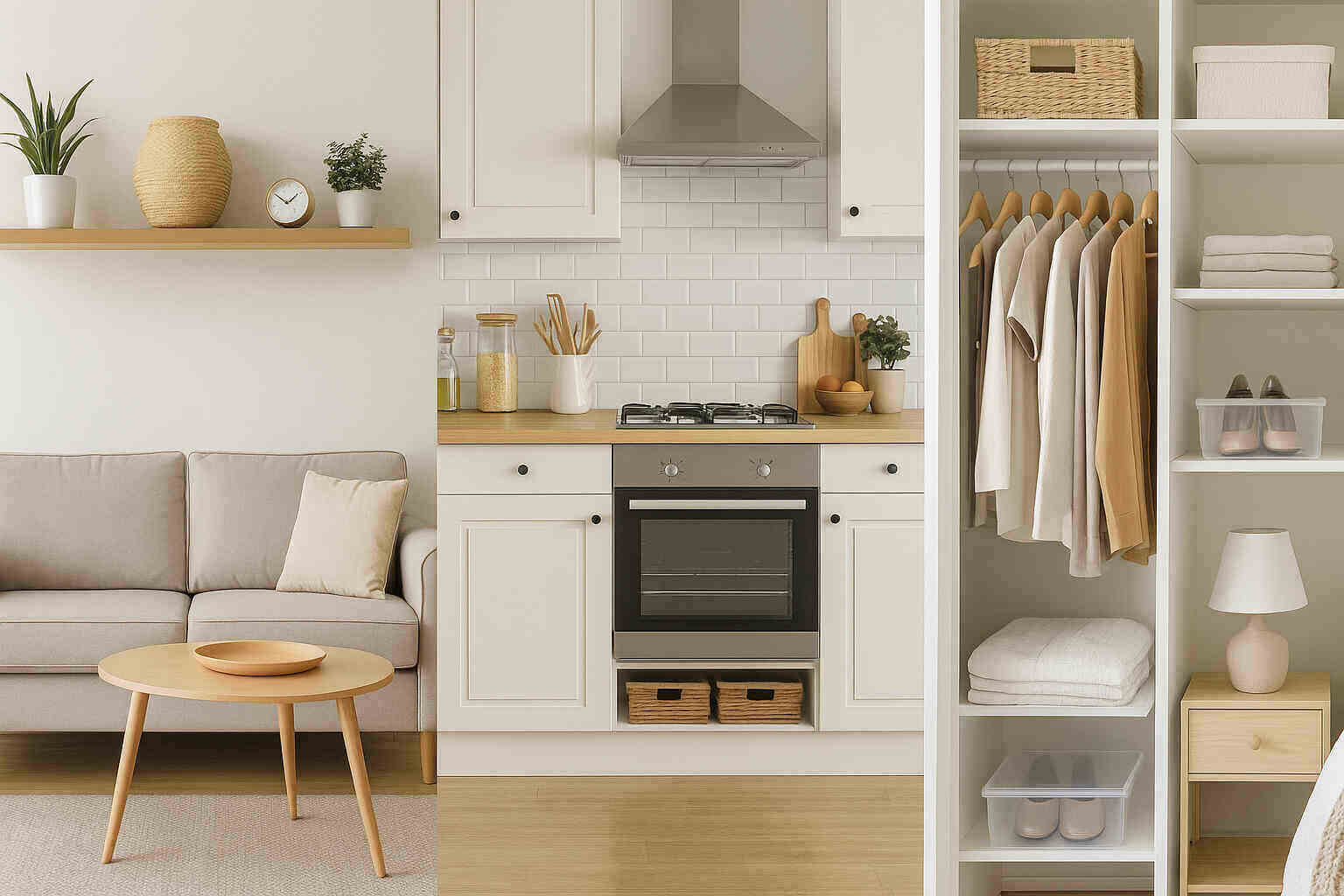A well-organized home fosters calm, boosts efficiency, and even saves money. Tackling clutter room by room transforms overwhelming projects into manageable victories, each adding to a more peaceful living space. Smart storage solutions, creative layouts, and thoughtful decluttering make every corner of a home shine. Whether it’s streamlining kitchen chaos or crafting a serene bedroom retreat, strategic organization turns homes into places that truly support daily life. Dive into practical ways to transform each room into a functional and beautiful space.
1. Entryway: Setting the Tone

The entryway serves as the threshold between the chaos of the outside world and the sanctuary of home, making it crucial to keep this area organized and inviting. Start by minimizing clutter with wall-mounted hooks for coats, bags, and keys, which prevent these essentials from ending up scattered on nearby tables.
A slim console table or a narrow bench with hidden compartments offers storage for shoes, umbrellas, or seasonal gear. For tight spaces, consider vertical solutions like cubbies or hanging baskets to keep items accessible yet out of sight. Using a decorative tray on the console table creates a designated drop zone for mail and sunglasses, maintaining a tidy appearance.
Adding a small rug not only defines the space but also traps dirt, preserving the cleanliness of the rest of the home. Mirrors in the entryway create the illusion of a larger, brighter space while providing a practical last-minute appearance check. Maintaining a minimalist approach in this high-traffic area helps reduce stress when entering or leaving the house.
2. Living Room: Balancing Comfort and Order
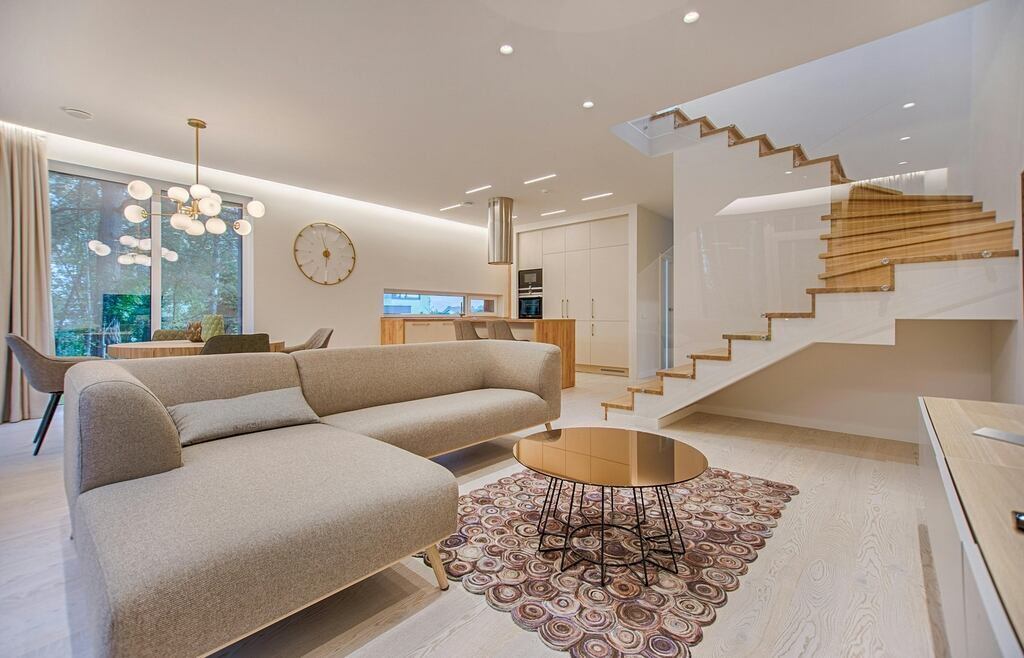
A living room should be both a place to relax and a functional space that accommodates daily activities without descending into chaos. Start by arranging furniture to promote conversation and traffic flow, ensuring pathways remain clear. Storage ottomans or coffee tables with hidden compartments provide convenient spots for storing remotes, magazines, and blankets while maintaining a clean look.
Open shelving units offer display opportunities for decorative objects but should be styled sparingly to avoid visual clutter. Select storage bins or baskets in a matching color scheme to blend effortlessly with the room’s decor. Keep electronics organized with cable management systems to avoid unsightly tangles behind entertainment centers.
A few strategically placed trays can help corral smaller items on surfaces like side tables or media consoles. If the room serves multiple purposes, such as a play area or home office, use area rugs to define zones and create visual boundaries. Rotate decor items seasonally to keep the space feeling fresh without accumulating excess items. Light, airy window treatments enhance a sense of spaciousness while allowing natural light to brighten the room.
3. Bedroom Nightstand: Intentional Essentials
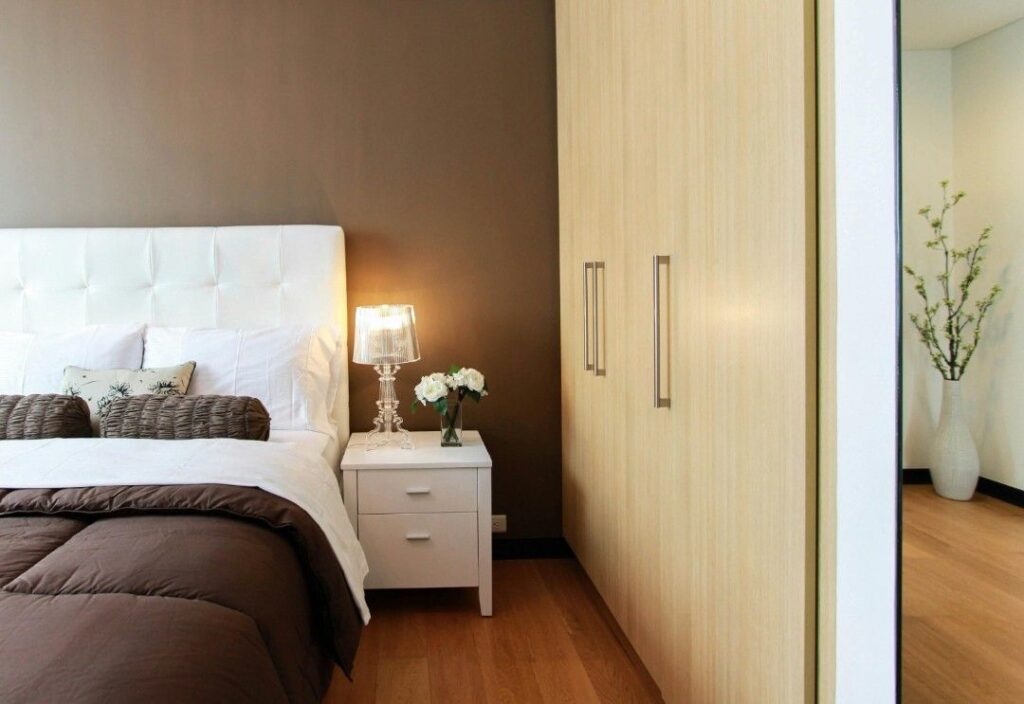
A nightstand should serve as a calm, clutter-free space supporting restful sleep. Begin by clearing everything off and asking whether each item truly belongs there. Keep only essentials like a lamp, clock, and perhaps one or two items that bring comfort—a favorite book or small framed photo. Inside drawers, use small dividers to separate items like reading glasses, lip balm to prevent them from tangling or becoming lost.
A small dish or tray on the top surface is helpful for corralling jewelry or loose change. Choose for nightstands with built-in storage if your space is limited, combining style and function. Keep nighttime reading material minimal—one or two books rather than towering stacks—to reduce visual clutter and help the mind relax.
Avoid storing snacks or drinks long-term, as these attract pests and contribute to a mess. For those with medical devices like a CPAP machine, discreet baskets or boxes can keep cords and accessories tidy. Periodically revisit the nightstand’s contents to ensure items remain purposeful and clutter doesn’t creep back in.
4. Bedroom Closet: Curated Simplicity

A bedroom closet should feel like a personal boutique rather than a chaotic jumble. Begin by removing every item and sorting clothes into keep, donate, or discard piles. Be honest about items you haven’t worn in over a year. Invest in slim, non-slip hangers to maximize hanging space and create a uniform look. Organize garments by category—shirts, pants, dresses—and then by color for easy visual scanning.
Consider installing a double hanging rod to accommodate more clothes without crowding. Use transparent bins to store accessories such as scarves or belts, and label them clearly for quick identification. Store seasonal clothing in labeled boxes on higher shelves, rotating items as the weather changes. Shoe racks or cubbies keep footwear off the floor and accessible.
Drawer dividers help maintain order in areas designated for undergarments or workout wear. Incorporate small bins for handbags or hats, preventing them from becoming misshapen or dusty. If you share a closet, establish clear zones for each person’s belongings to avoid overlap. Keep a donation bag in the closet to encourage ongoing decluttering. For a luxurious touch, add a scented sachet to keep clothes smelling fresh.
5. Kitchen: Clearing Counters and Cabinets
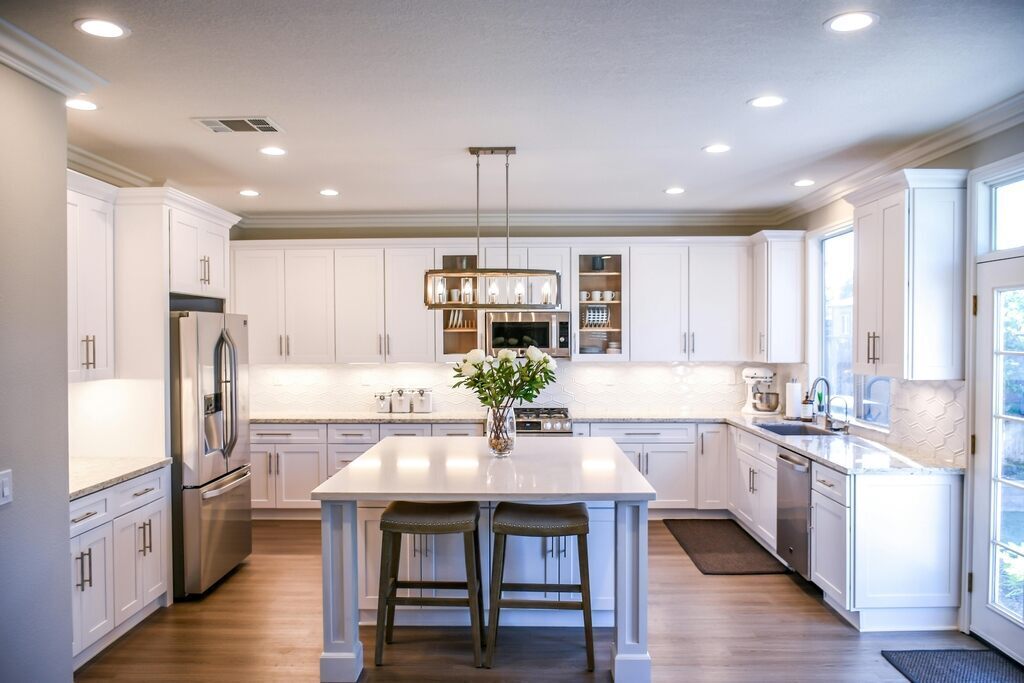
The kitchen is a hub of activity, which means it’s prone to clutter if organization systems aren’t in place. Start by clearing countertops of anything you don’t use daily, storing small appliances like blenders or mixers in lower cabinets to free up space. Invest in drawer dividers to keep utensils sorted and easily accessible, avoiding the dreaded “junk drawer.”
Use clear containers in the pantry for dry goods, which not only look neat but also make it easier to see what you have at a glance. Labeling shelves or bins adds an extra layer of clarity, especially in shared households. Utilize the backs of cabinet doors to hang racks for spices, pot lids, or cleaning supplies, maximizing every inch of space. Lazy Susans in corner cabinets ensure items don’t get lost in dark recesses.
For refrigerators, assign zones for produce, dairy, and leftovers to streamline meal prep and prevent forgotten food waste. Magnetic strips mounted on walls can hold knives or small metal utensils, freeing up valuable drawer space. For limited counter space, use a portable rolling cart that can be easily stored when not needed. Maintaining a weekly routine of wiping surfaces and sorting through perishables keeps clutter in check.
6. Pantry: A Haven of Order
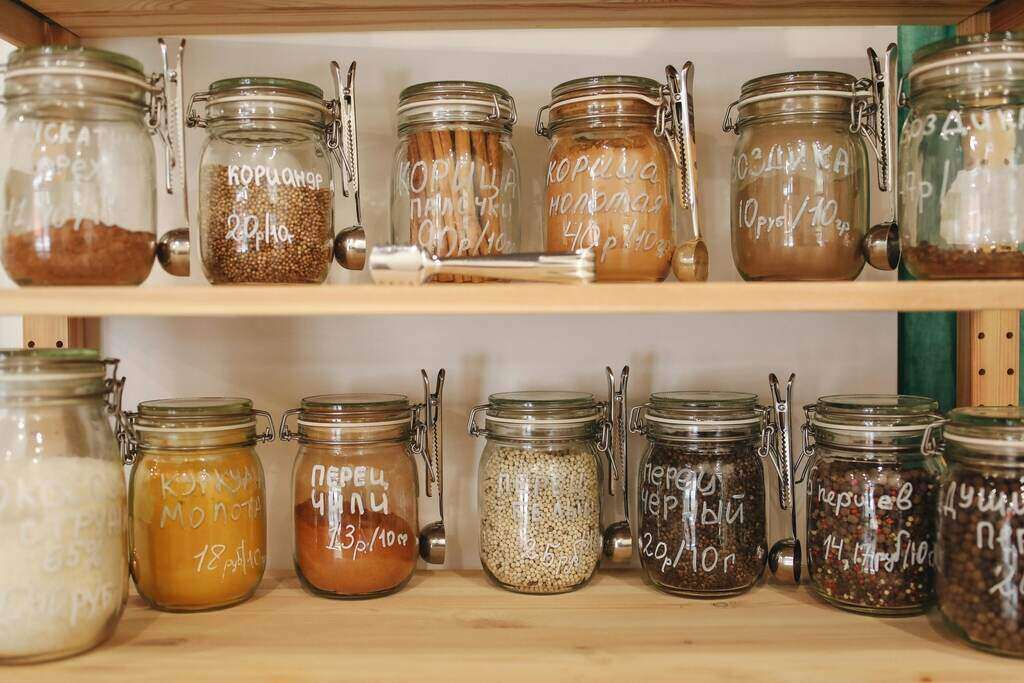
An organized pantry makes meal prep faster, reduces food waste, and saves money by preventing duplicate purchases. Begin by emptying all shelves and discarding expired items. Group foods into categories—baking supplies, canned goods, snacks—and assign them dedicated zones. Clear containers for grains, cereals, and pasta keep contents visible and extend shelf life, while labels help everyone find what they need.
Tiered shelf organizers or risers are excellent for making items at the back visible and accessible. Utilize the pantry door by installing spice racks, small baskets, or even a whiteboard for grocery lists and meal plans. Keep frequently used items at eye level, while lesser-used products can be stored higher or lower. For families, designate a kid-friendly snack shelf to encourage independence while maintaining order.
Rotate older products to the front when restocking to ensure nothing goes to waste. Store heavy items like large oil bottles or bulk flour on sturdy lower shelves for safety. If space allows, incorporate pull-out drawers for easy access to deep shelves. A small bin labeled “Open First” can prevent half-used packages from getting lost.
7. Dining Room: Functional Elegance

While often used for meals, dining rooms can become catch-all spaces for mail, school projects, and miscellaneous clutter. Begin by designating the dining table as a “clutter-free zone,” clearing it daily and using a decorative centerpiece as a gentle deterrent for random items. Keep dining essentials such as placemats, napkins, and candles in a buffet or sideboard so they remain accessible but neatly tucked away.
Utilize drawer dividers or bins inside the sideboard to separate items by occasion or season. If your dining room doubles as a workspace, invest in stylish storage solutions such as decorative boxes or baskets to swiftly tidy away work materials when it’s mealtime. Floating shelves or built-in cabinetry offer additional storage without encroaching on floor space. Consider using a bar cart for serving drinks or storing extra dishware, adding both function and style.
Good lighting is crucial; opt for dimmable fixtures that transition easily from bright task lighting to ambient dinner lighting. Artwork or a feature wall adds visual interest and personalizes the space without contributing to clutter. Keep window treatments simple to avoid overwhelming the room’s aesthetic. Regularly purge unused or outdated table linens and dishes to maintain manageable storage levels.
8. Refrigerator: Fresh and Functional
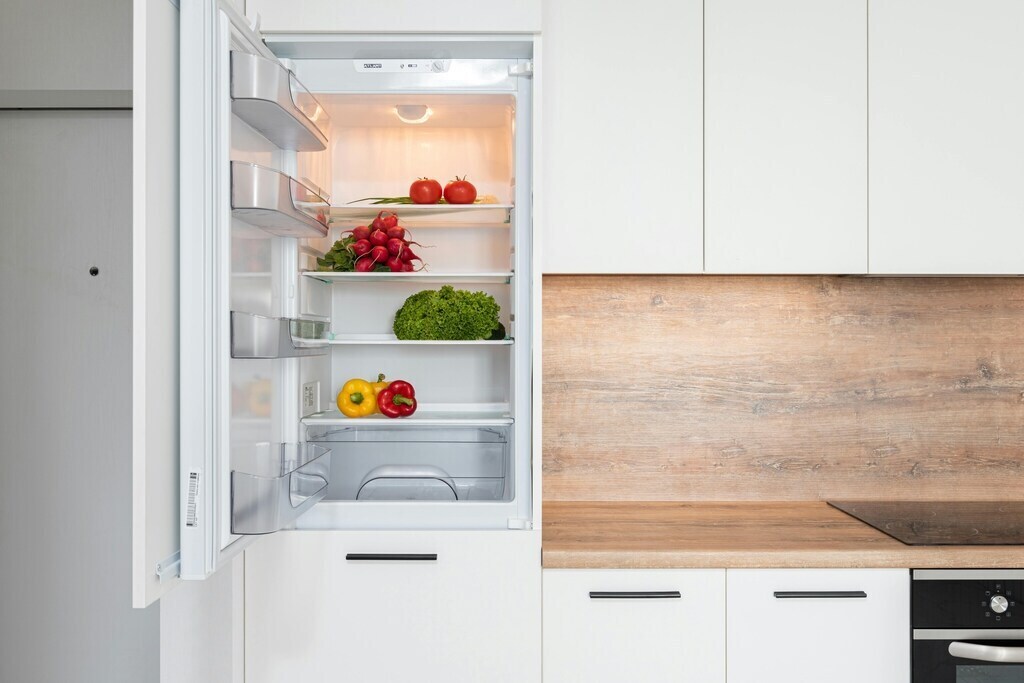
An organized refrigerator helps cut costs, minimizes food waste, and simplifies meal preparation. Start by taking everything out and cleaning the shelves with warm, soapy water. Assign zones for specific items: dairy on one shelf, produce in drawers, condiments in door compartments. Clear bins help group similar items like snacks or deli meats, making it easy to grab what you need quickly.
Labeling bins or shelves provides clarity for all household members and discourages clutter. Store raw meats on the lowest shelf to prevent potential leaks onto other foods. Arrange items by expiration dates, placing older products in front to ensure they’re used first. Consider a “use me first” bin for items nearing expiration. Glass containers work well for leftovers, allowing visibility while reducing plastic use.
Avoid overfilling the fridge; airflow is critical for maintaining proper cooling. Use lazy Susans for small jars to prevent losing items in the back. Frequently check contents and plan meals around what’s already on hand to minimize waste. For safety and efficiency, keep a thermometer inside to ensure temperatures stay below 40°F.
9. Bathroom Vanity: Streamlined Storage
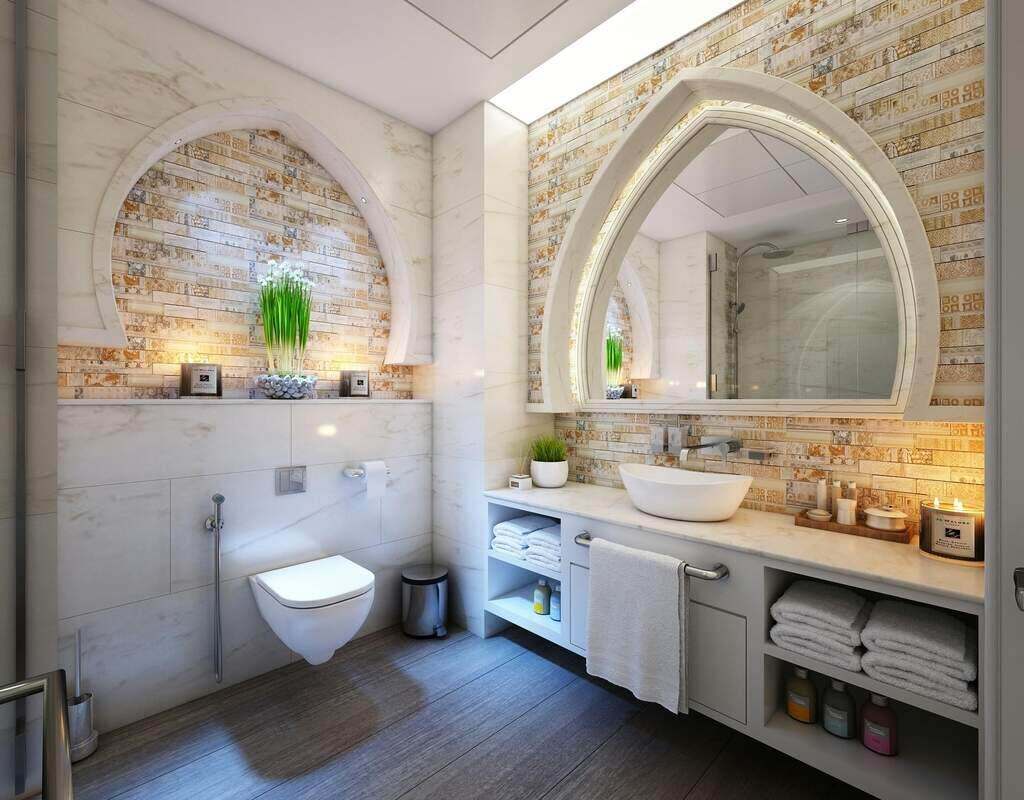
The bathroom vanity can quickly become a jumble of half-used products, hair tools, and daily necessities. To begin, start by decluttering ruthlessly, discarding expired cosmetics, old skincare items, or duplicates. Next, sort remaining items into daily, weekly, and occasional-use categories. Then, use drawer organizers to keep makeup brushes, hair ties, and grooming tools separated and easy to find.
Additionally, small acrylic trays on the vanity surface can corral frequently used items without looking messy. Moreover, utilize vertical space with wall-mounted shelves or medicine cabinets for extra storage. Furthermore, bins under the sink are perfect for storing backstock items like extra soap, shampoo, and toilet paper. Clearly, labeled bins make it easy to identify contents and help avoid purchasing duplicates.
Meanwhile, keep cleaning supplies in a separate container to avoid chemical spills near personal items. Also, consider placing a lazy Susan under the sink for easy access to deep cabinet corners. For a touch of luxury, add a decorative tray for perfumes or skincare products, elevating the aesthetic without creating clutter. Finally, regularly reassess contents to prevent accumulation.
10. Bathroom Linen Closet: Spa-Like Simplicity
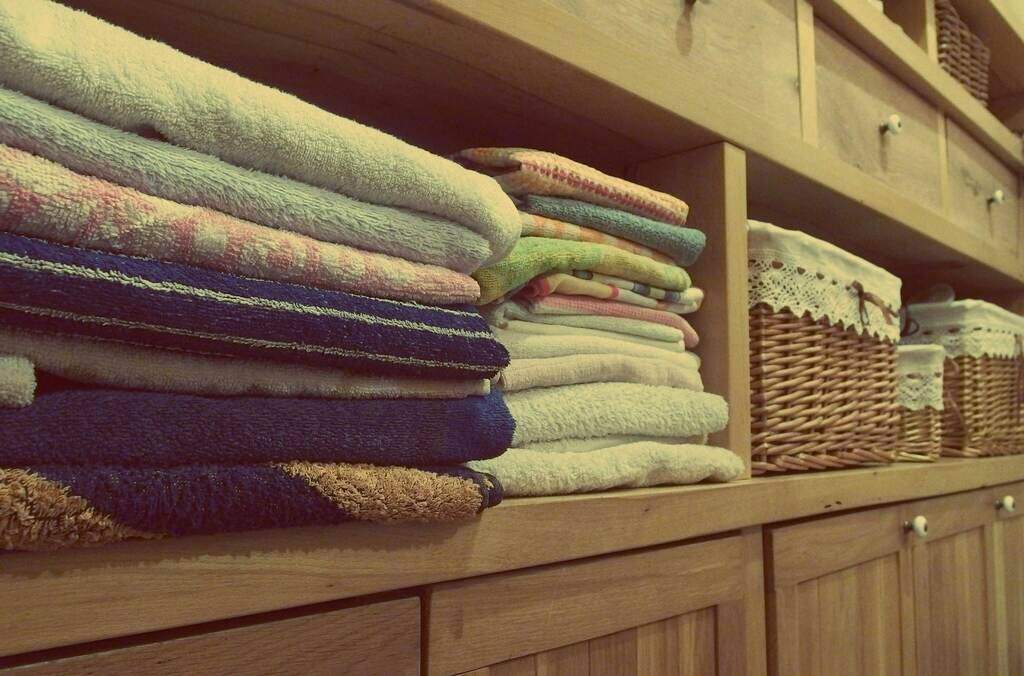
The bathroom linen closet often holds more than just towels, including toiletries, cleaning supplies, and backup personal items. Begin by clearing the entire space and discarding expired products or anything you no longer use. Group items by category—towels, washcloths, extra toiletries—and assign each shelf a purpose. Fold towels uniformly for a neat, spa-like appearance.
Roll washcloths and store them in small bins for easy access and a decorative touch. Keep everyday toiletries on middle shelves for convenience, while seldom-used items can go on higher or lower shelves. Clear bins are excellent for storing smaller items like razors, cotton swabs, or travel toiletries. Label bins clearly to help everyone in the household find what they need quickly.
Store heavy items like bulk shampoo bottles on lower shelves for safety. Use over-the-door organizers for additional storage of small items like hair tools or cleaning cloths. Add a small basket to hold items destined for donation or recycling, such as hotel toiletries you won’t use. Keep a sachet or essential oil diffuser in the closet for a fresh scent.
11. Laundry Room: Practical and Efficient
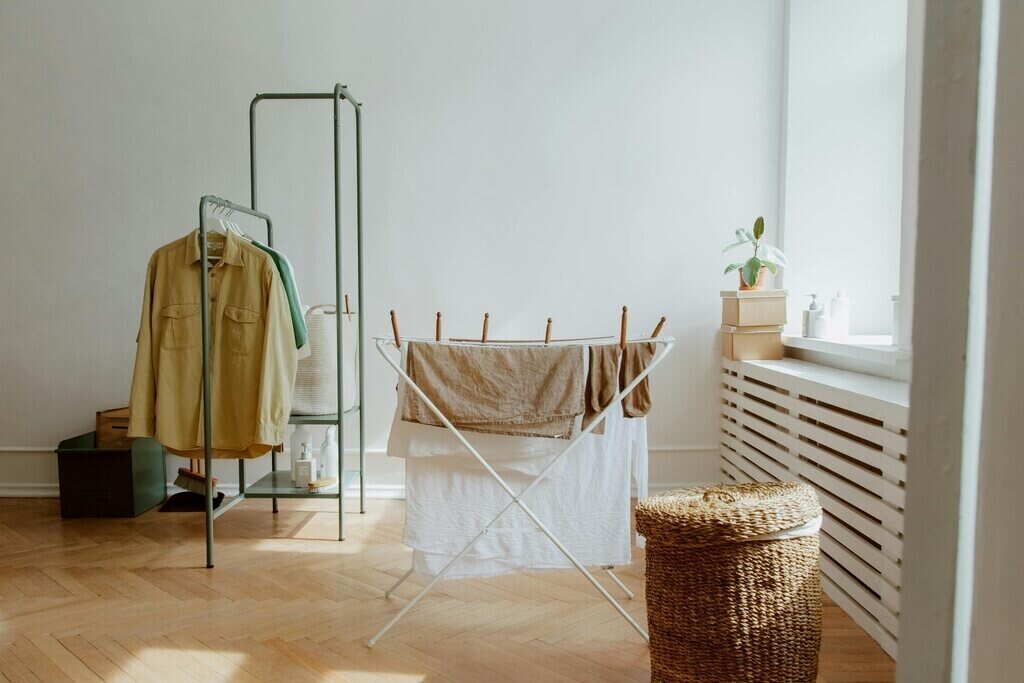
A well-organized laundry room can make a tedious chore more enjoyable and efficient. Start by decluttering countertops and shelves, removing products or tools you don’t use regularly. Use wall-mounted racks or fold-down drying racks to save space while providing plenty of room for air-drying delicate garments. Consider sorting laundry hampers labeled for whites, darks, and delicates to streamline washing.
Keep detergents and cleaning supplies in clear, labeled containers for a uniform and attractive appearance, preventing spills and making it easy to see when supplies are running low. Install a countertop over front-loading machines for a folding station if space allows. Small baskets can corral stray socks or lost-and-found items until they’re claimed.
Hang a pegboard for organizing tools like lint rollers, stain removers, or small sewing kits. If your laundry area doubles as a mudroom, create designated zones with hooks for coats and shelves for shoes. Sufficient lighting and proper ventilation are important to prevent mold and keep the workspace comfortable. Regularly wipe machines and surfaces to prevent lint and detergent build-up.
12. Pet Area: Keeping Supplies Neat and Accessible

Designating a specific spot for your pet’s essentials helps keep your home tidy and your furry friend comfortable. Start by choosing a convenient, low-traffic area for feeding, resting, and storing supplies. Use bins or baskets labeled for food, treats, toys, and grooming tools to keep everything organized and easy to find.
Consider a storage bench or cabinet that doubles as a feeding station, concealing bowls and supplies when not in use. Wall-mounted hooks or shelves can hold leashes, collars, and cleaning tools, freeing up floor space. If space allows, create a cozy nook with a bed or crate to give your pet a dedicated retreat. Frequently declutter and rotate toys to maintain a fresh and welcoming space.
Keep cleaning supplies like stain removers and pet-safe disinfectants in a safe, accessible spot nearby. For busy households, a small drawer or basket near the entrance is handy for quick access to items like waste bags or portable water bottles during walks. Maintaining an organized pet area reduces stress for both pets and owners and helps keep your home cleaner.
13. Kids’ Rooms: Managing Chaos
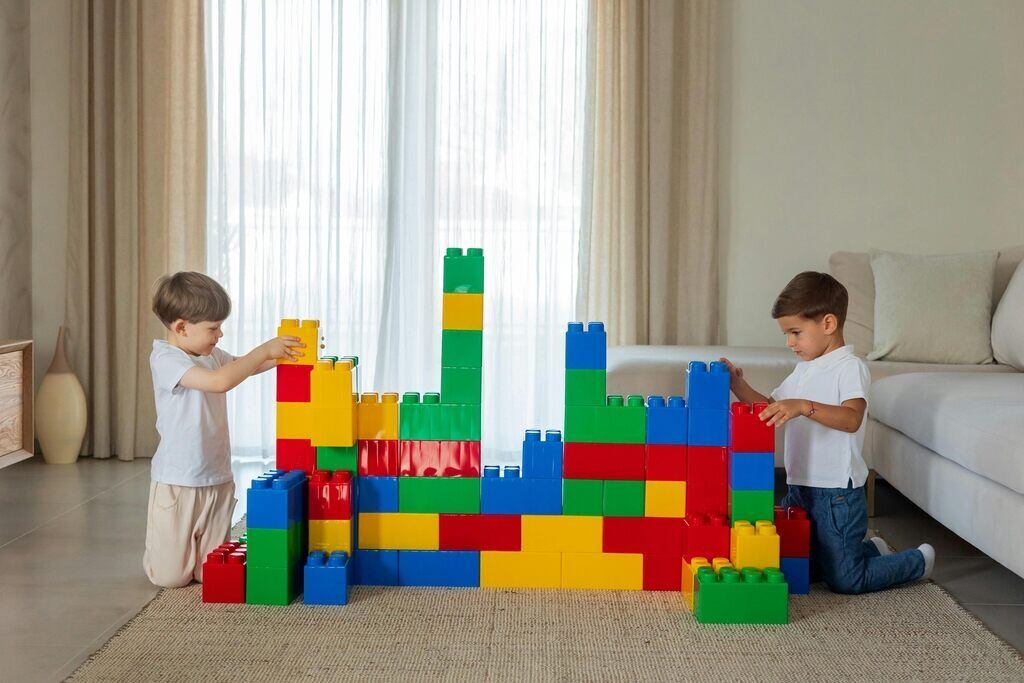
Children’s rooms often overflow with toys, books, and clothes, making thoughtful organization crucial. Start by purging toys and clothes that children have outgrown or no longer use, involving kids in decisions where possible. Use clear, labeled bins to categorize toys—like blocks, dolls, or cars—so children know where items belong.
Cubby storage systems are excellent for providing accessible, flexible spaces that grow with your child. Rotate toys periodically to keep the space interesting without overwhelming clutter. Utilize under-bed storage for seasonal clothing or extra bedding. Bookshelves with forward-facing shelves encourage reading by displaying book covers rather than spines.
Hooks at child-friendly heights make it easy for kids to hang up coats or backpacks. Keep clothing organized with labeled drawers or closet dividers. Incorporate playful colors and décor to make the organization fun rather than a chore. Designate a small desk area for crafts or homework, keeping supplies organized in labeled containers. Regularly revisit the room’s contents to ensure it remains manageable as kids’ interests evolve.
14. Home Office: Boosting Focus and Productivity

A tidy home office enhances focus, sparks creativity, and promotes mental clarity. Begin by clearing the workspace completely and grouping items into categories like office supplies, paperwork, and tech accessories. Keep only what you genuinely use daily on your desktop—such as your computer, a lamp, and perhaps a small plant for a calming touch.
Implement cable management solutions like clips or sleeves to corral cords and keep them off the floor. Create zones within the office for specific tasks: a computer station, a paper filing zone, and a storage area for supplies. Utilize drawer organizers to keep pens, paperclips, and sticky notes neatly separated. Vertical file holders keep papers in order without consuming valuable desk space.
Open shelving adds accessible storage while allowing for decorative displays of books or art. For smaller spaces, consider foldaway desks or wall-mounted workstations. Regularly purge old paperwork and backup digital files to keep both physical and digital clutter under control. A comfortable chair and proper lighting reduce strain during long work sessions.
15. Garage: Zones for Every Purpose

The garage often becomes a catch-all for items lacking a home, leading to chaos. Begin by emptying the space and categorizing items into keep, donate, or discard piles. Designate dedicated zones for tools, sporting gear, gardening supplies, and seasonal decorations. Invest in heavy-duty shelving units to keep items off the floor and protect them from moisture.
Pegboards are invaluable for hanging tools, making them visible and easy to grab. Use clear storage bins for smaller items and label them for quick identification. Overhead racks are perfect for storing less frequently used items like holiday decorations. Keep a sturdy step stool nearby to access high shelves safely. Store hazardous materials such as paint, oil, and pesticides in a locked cabinet for safety.
Reserve space near the garage door for frequently used items like reusable shopping bags or bicycles for convenience. A rolling tool chest keeps essential tools portable and organized. Regularly sweep and declutter to maintain clear pathways for vehicles and easy access to stored items.
16. Outdoor Space: Organized for Relaxation and Function

Whether it’s a small balcony, a cozy patio, or a spacious backyard, organizing your outdoor space can transform it into an inviting extension of your home. Begin by defining the purpose of the area—relaxation, dining, gardening, or entertaining—so you can organize accordingly. Use weather-resistant storage benches or deck boxes to conceal cushions, gardening tools, or outdoor toys when not in use.
Wall-mounted hooks or pegboards work well on fences or walls for hanging tools, hoses, or decorative elements. Additionally, choose collapsible or stackable furniture if space is limited, allowing for easy rearrangement and storage. Furthermore, vertical planters or shelving help maximize greenery without crowding the floor. If dining outdoors is common, designate a corner for a small table and chairs, with a rolling cart nearby to hold serveware, napkins, and outdoor-friendly dishware.
Use outdoor rugs to define zones and bring an indoor feel to the space. To stay prepared, keep citronella candles, bug spray, or other outdoor essentials in a dedicated caddy or basket for quick access. Finally, regularly sweep, wipe down furniture, and check for weather damage to keep the area fresh and functional.

